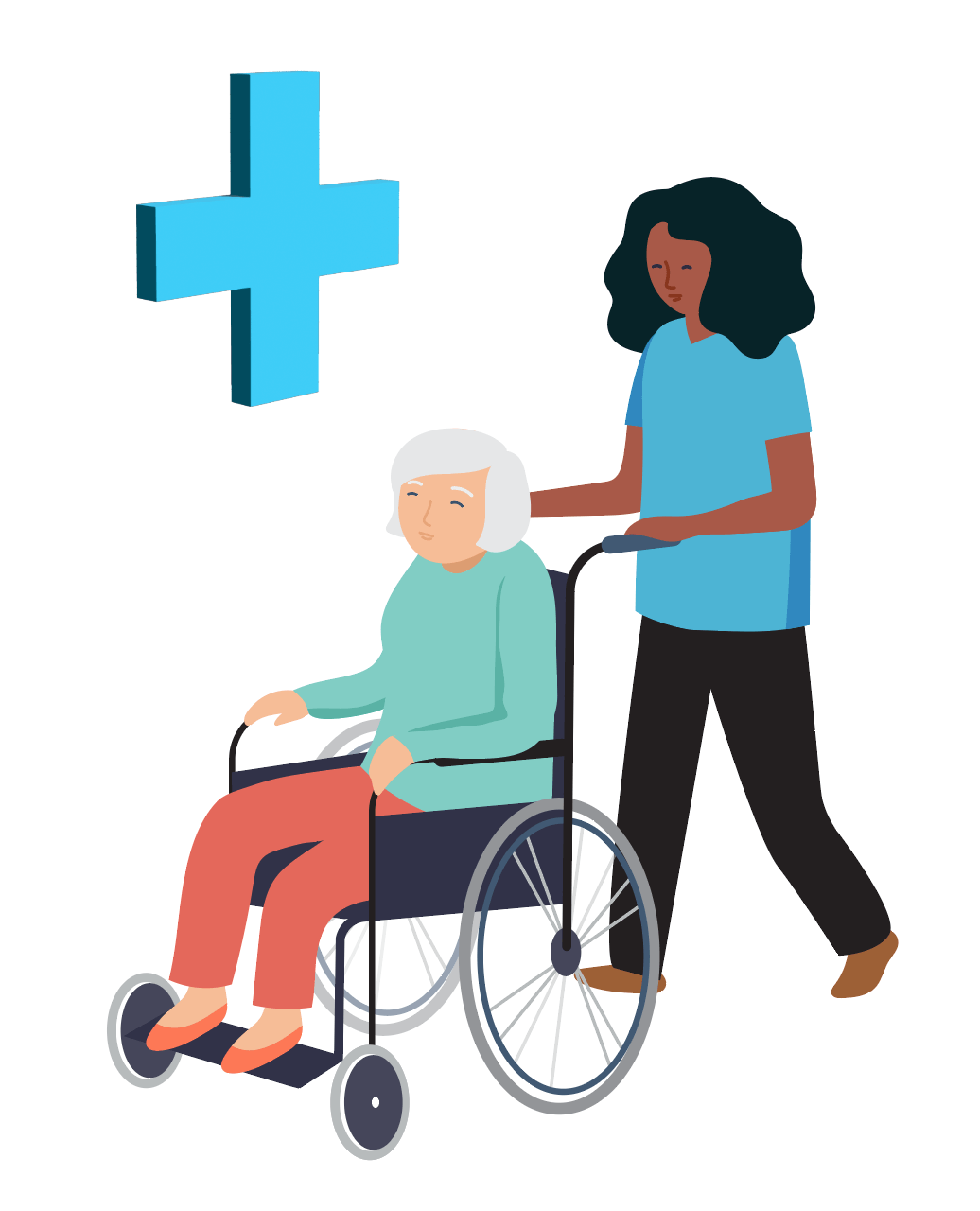As children, we never see health as anything but personal: we got sick, we went to the doctor, we got better (hopefully). And health risk factors were nearby—germs from siblings or school friends, injuries at parks or in sports, etc. The world of health was narrow. As adults we know, of course, that it’s more complicated than that: individual wellbeing can be understood not just by a range of personal experiences but through broad contextual factors like public policy, economics, and geography—what together have come to be known as the Social Determinants of Health (SDoH).
When we contextualize healthcare through SDoH, it becomes easier to identify more effective, farther reaching solutions that affect not just individuals but entire communities as a whole.
When we contextualize healthcare through SDoH, it becomes easier to identify more effective, farther reaching solutions that affect not just individuals but entire communities as a whole. This is an extremely powerful and important way to reframe how we must think about health. Unfortunately, unless we are in a position to effect change at the policy level, viewing our work through the lens of SDoH can actually impede our ability to improve lives and change communities. Why? Because it misrepresents exactly where and how we can successfully intervene.
Social Determinants of Health are Neutral
The Social Determinants of Health include five key areas that capture how where we live affects how we live:
- Economic Stability
- Education
- Social and Community Context
- Health and Health Care
- Neighborhood and Built Environment
SDoH are most often presented as inherently negative—as something to be “addressed”; but they are, in fact, neutral frames for evaluating how a person’s health is shaped, for better or worse, by forces larger than their personal choices. For example, a person’s level of housing security indicates their level of economic stability. If a person and those around them are housed securely, their well-being is likely greater than a person whose housing is less secure. Similarly, a person’s level of education (and the broader community’s access to education) predicts their level of health. Food and educational access determine a population’s health status in general; they don’t necessarily determine it negatively. Communities with high levels of access to food and education do not need to have their SDoH addressed. In short, SDoH tell us where to look, not what we will see.
Social Determinants of Health Need Policy Solutions
Leaning too heavily on SDoH poses another problem: if we employ SDoH as a lens to evaluate population health, then our solutions must be enacted at the level. For example, a policy intervention that seeks to alleviate insecure housing by allowing Medicaid to cover rent can lead to significant health outcomes for the whole community. This is what it would mean to truly address SDoH. Because these interventions require significant political capital and access to the levers of power, most of us working in this space are not targeting these sorts of solutions. We’re doing something different. What?

Social Risk Factors, Health Related Social Needs, and Downstream Interventions
If we’re not affecting policy change and if we’re not “addressing SDoH”, then what are we doing? How do we discuss the negative conditions associated with poorer health that we seek to address when we address SDoH? We need a different term. That term is social risk factors. Social risk factors are those aspects of SDoH that are inherently negative: low education, insecure housing or food, lack of transportation, etc.
Social risk factors indicate where to intervene: either upstream at the larger political, geographic, and economic forces (i.e., SDoH) or downstream at health related social needs. Allowing Medicaid to cover rent is an upstream intervention; helping an individual pay their rent (irrespective of any larger policy change) is a downstream intervention. Both interventions are necessary, of course, but the work we and others like us do exist downstream by addressing social risk factors that manifest as health related social needs. We aren’t working upstream at the policy level, at least not directly.

So What?
Advocating for these kinds of definitions may seem pedantic. What difference does it make what we’re addressing? We believe it makes a big difference. First, it’s simply a more accurate representation of the relationship between concepts too carelessly tossed around. This sensitivity is necessary if we want to earn the trust of those we collaborate with.
Equally important, these distinctions help to clarify how exactly we are to understand the problems we hope to address. Relying on a SDoH framework not only inaccurately describes our work, but it also fails to train our focus on the health related social needs and social risk factors where our interventions can do the most good.
Relying on a SDoH framework not only inaccurately describes our work, but it also fails to train our focus on the health related social needs and social risk factors where our interventions can do the most good.
For example, in order to understand how to help people, it’s common to use either census and claims data or conduct surveys, neither of which are particularly effective. It’s notoriously hard to predict which interventions to pursue using census and claims data alone, and self-reporting on surveys is also unreliable: sometimes people don’t want to share; sometimes they don’t even know what they need.
There’s a more effective way to do this, of course; a way that accurately captures the on-the-ground social needs of a person or community. How? By starting with a community-based approach that recognizes how SDoH affects individual lives.
For more on health-related social needs and a different perspective on overcoming SDoH barriers, get a copy of Reema’s latest report, “A Better Way to Address Social Determinants of Health.”



